F1 is a breakthrough in race action and it is not your typical racing film. The production of the film was extreme in many senses, including training as a professional driver and filming on real F1 tracks during a live Grand Prix weekend. The film promises the highest level of realism by utilizing the latest advancements in camera technology.
Brad Pitt transformed into a racer for the role. The resulting film captures the thrill, danger, and glamour of F1 racing in a way that has never been seen before. These are seven of the most shocking facts that make F1 unique.
Disclaimer: This article is based solely on the writer's opinion. Reader discretion is advised.
Here is the list of 7 mind-blowing facts about Brad Pitt's F1
7. F1 legends were consulted, and appeared on screen
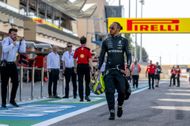
Lewis Hamilton was an active consultant and full-time producer in F1. He assisted in the development of the writing from the beginning. He promised to advise on things like racing specifics, such as what gear Brad Pitt should be on on a certain track.
For example, he claimed that at Silverstone, the wrong gear was taken on Turn 3. Hamilton came up with a plan to fix it, and even suggested that in some scenarios, the pass should be done at Turn 6 in Budapest.
According to GQ, Lewis also entered on-track sessions, instructing Brad Pitt and Damson Idris at Silverstone and at each race. He trained them on how F1 drivers in real life feel after the race, and Pitt learned how to show physical exertion. Producers and directors kept coming back to the same point—that without his contribution, the racing could not have been so authentic.
The participation of Hamilton brought realism to the conversations, car sound, gear changes, mental exhaustion, and race tactics, which made the film authentic.
6. A new miniature camera system was engineered just for this movie
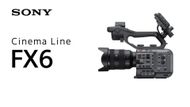
The team adopted a Sony-created special camera system to shoot the race scenes. They constructed a miniature, full-frame, so-called sensor-on-a-stick camera. It employed a significantly downsized Exmor R sensor from the Sony FX6. That allowed the camera to fit into the cockpit halo and tight places. It could record 4K 10-bit 4:2:2 video at up to 600 Mbps. This matched the quality of their primary camera system.
It has been mentioned on the F1 official website that each car had up to four cameras, which were equipped with remote controllers and could either pan or tilt during filming by Preston Motors. The viewpoints were displayed on screens in the prep trailer, which the crew was watching in real time.
It enabled shots to be taken from new angles, such as inside the helmet or the cockpit, to show real speed and the face of the driver. The camera units were lightweight enough to maintain the car's balance while being strong enough to withstand heat, vibrations, and G-forces of actual racing cars.
5. Brad Pitt trained for 4 months and endured G-forces on the circuit
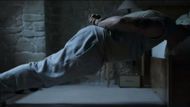
Brad Pitt trained very hard for F1. It took him four to five months to learn how to drive like a true F1 driver. He began in Formula Three vehicles, and later graduated to modified Formula Two vehicles. He trained in driver simulators and live vehicles. He was pushed to the limit of physical endurance. He encountered significant G-forces, which are typically experienced by actual Formula One drivers at speeds above 180 mph.
The vehicles are very hot, and they require a lot of strength in each turn. He learned how to shift into different gears, brake, and hold the steering wheel under pressure. Once, his stunt coach, who was once an F2 champion, warned him to be a bit slower. But Pitt said he disregarded the boundary as he sought accuracy in his shots. Lewis Hamilton praised him, calling him a “natural athlete.”
Finally, he was able to maintain the speed and impetus in the difficult race-like environment. All these ensured that his performance was authentic and exciting.
4. Filming took place during the actual Grand Prix weekends
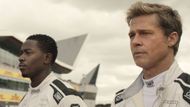
F1 was filmed during actual Formula 1 race weekends. The film crew created a fictional racing team, APXGP, and provided it with an actual pit garage at the level of Silverstone, Monza, Spa, Zandvoort, Suzuka, Mexico City, Las Vegas, and Abu Dhabi. The two F2-series modified cars were driven by Pitt and Damson Idris through live formation laps, which slipped into the actual field behind drivers such as Max Verstappen and Lewis Hamilton.
They were allowed extremely short windows of opportunity to shoot in between official sessions, and occasionally they were unable to film for longer than a few minutes. They even parked APXGP in the paddock, wore team uniforms, and mixed with fans and the media.
The majority of the audience was initially unaware that they had just been exposed to a film crew. This made a potent combination of live crowd action and film drama. That made F1 seem realistic to the fans as well as to new entrants.
3. Mercedes-AMG and Carlin built the custom film cars
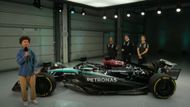
In F1, the filmmakers began the work with six actual Formula 2 race cars. They transformed those vehicles into APXGP gear in collaboration with Mercedes-AMG F1 and Carlin engineers. These adapted cars could carry camera rigs, transmitters, and other equipment while also being fast enough to compete in F1 races.
They increased aerodynamic elements and stiffened the chassis in areas as necessary. These cars were driven by Brad Pitt and Damson Idris on actual race tracks. This is a real F2 vehicle on real tarmac every time Sonny Hayes is shown in a driving shot.
The dollops of adrenaline created by using literally raced modified F2 vehicles on a frame-by-frame basis produced the realistic aspect. Director Kosinski proposed this and credited Toto Wolff of the Mercedes team for coming up with the concept.
In so doing, the movie was not subject to artificial imitations or backgrounds. The outcome is a hybrid race car that is both a production car and a working machine that can be used for the purpose of shooting and filming at high speeds.
2. Brad hit nearly 200mph
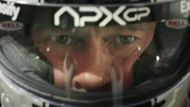
In F1, Brad Pitt was not only acting—he was on the road at actual speed. During his training and filming, he had to drive in modified F2 cars on actual tracks. He was traveling at more than 180 mph, which was very near 200 mph. At the European launch, he claimed to have reached an indicated top speed of 197 mph in an actual McLaren F1 car at the Circuit of the Americas. That was the experience that followed shooting with the alleviated cars.
These F2-based vehicles offered horrific speeds and required real skills, even though they lacked the power of real F1 vehicles. Pitt had to train for several months to learn to deal with high-speed braking, negotiating corners, and the physical exertion of G-forces. He became an expert at fusing genuine driving with performance acting. Brad actually drives in the film's thrilling car scenes, which are set at real racing speeds.
1. Pitt actually drove on real F1 tracks at high speed

In F1, Brad Pitt got behind the controls of a modified Formula 2 car and drove it himself around real F1 circuits. The cars that were produced with the assistance of Mercedes-AMG and Carlin were provided with F1-style aerodynamics. At live race weekends, at circuits such as Silverstone, Monza, Spa-Francorchamps, Suzuka, Mexico City, Zandvoort, Hungary, and Abu Dhabi, Pitt raced.
Pitt was completing formation laps behind real F1 cars, and the cars, although not being authentic F1 cars, attained incredible speeds. Like any other race team, he would park the APXGP cars and enter the paddock to stand on the grid at the beginning of the national anthem.
The shooting of all footage happened in the time slots between formal sessions. This crude technique implied minimal green screen or CGI to simulate speed. Pitt experienced actual G-forces, the screams of engines, and also the excitement of real pits and the crowd. He is not faking his driving. All he is driving at—very close to 180 mph—is him.
The production of F1 went quite beyond regular moviemaking. Brad Pitt did not use stuntmen and green screens. He got behind the steering wheel, reached speeds of more than 200 miles per hour, and drove the real race cars on already classic tracks. The frames were all full of genuineness, with professional advice given by Lewis Hamilton and the application of the latest technology.
The recordings of real Grand Prix weekends provided the all-spark energy of a crowd and searing realism. Everything was created to pay respect to the sport: custom-built race machines, as well as perfect driving techniques. Finally, F1 was not simply a film but some sort of celebration of the true spirit of racing.
Love movies? Try our Box Office Game and Movie Grid Game to test your film knowledge and have some fun!
